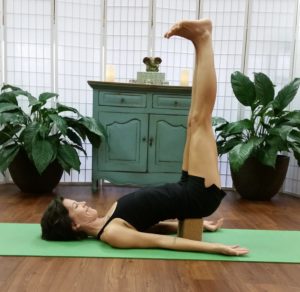Soothing the hot flash inferno
by Nancy B. Loughlin
Published in News Press on October 13, 2015
Hot flashes occur before and during menopause due to the decline of estrogen in the body.
For many, there are fireworks.
Yes, hormonal treatments can be helpful for managing hot flashes, but don’t ignore the power of the mind to help cool the furnace.
Dr. Gary Elkins is a professor of psychology and neuroscience at Baylor University. Elkins firmly believes there is mind-body connection when it comes to soothing hot flashes.
He is the author of “Relief from Hot Flashes: The Natural, Drug-Free Program to Reduce Hot Flashes, Improve Sleep, and Ease Stress” published by Demos Health Publishing.
He explained that hot flashes are actually caused when the brain perceives that the body is overheated and triggers sweating to achieve coolness. The part of the brain that is involved is the hypothalamus, the part of the brain that regulates body temperature.
“Therefore, if the mind can be taught to perceive coolness in the body, then hot flashes are reduced or do not occur,” Elkins said in an interview. He said several studies have now shown that guided imagery and relaxation such as hypnotic relaxation therapy can reduce hot flashes, ease stress, facilitate healing and improve sleep.
“I have an integrative view of human functioning,” he said. “The potential of humans can best be understood when we consider the entire person rather than only the physical self. The mind encompasses the brain but also includes consciousness, awareness, mental imagery and spirituality.”
Elkins’ research suggests keeping a daily diary of hot flashes and using audio recordings of hypnotic relaxation and mental imagery. The recordings guide the listener into a deeply relaxed state and suggest mental images for coolness. Examples of the mental imagery include walking down a beautiful, snowy mountain path or sitting outside near a lake on a cool evening.
Some research has shown that most women experience a noticeable decrease in hot flashes after just two or three weeks of practice, he said.
The methods can also be integrated with other mind-body practices such as yoga.
Given that hot flashes disrupt sleep and cause insomnia, try this sequence of relaxing inversions and twists along with cooling forward folds prior to bed.
Inversions
While lying on your back, slide a yoga block under your tailbone for a modified shoulder stand. Lift your legs into the air and breathe for three minutes.
Return the soles of the feet to the floor, and use the block to support Bridge Pose.
If you don’t have a block, slide your legs up the wall. Breathe until you feel your body and mind relax.
Twists
While lying on your back with your legs bent, soles on the floor, cross your right leg over your left, knee to knee. Drop your knees to the floor on the left and gaze over your right shoulder. Hold for three minutes before switching sides.
Forward Folds
Turn off your bedroom light, and sit on the edge of your bed with your feet on the floor, your legs in a wide V. With your hands on your knees, hinge from your hips and drop your torso between your thighs. Feel the crown of your head reaching toward the floor. Let your arms and hands drop.
Daily Meditation
Hot flashes can be exacerbated or even triggered by unmanaged stress, so beginning a daily meditation practice is essential.
Download a meditation application such as Insight Timer. Begin with a five-minute morning meditation. Upon waking, sit in bed or move to a straight chair. Close your eyes, and just focus on the breath for five minutes. Build the morning meditations up to 20 minutes if possible.
When hot flashes strike during the day, take a time-out with a cooling breath. Find a quiet place to sit and close your eyes. If you can, curl the sides of your tongue into the shape of a taco, and breathe through your mouth. If you can’t roll your tongue, press your teeth together, and breathe through your teeth. Continue until the heat subsides.
Ayurveda
Around the time of menopause, the body is exiting the Pitta stage and moving into Vata. According to Tess Chiodo, menopause is the “burn out” phase of Pitta.
“First, the discomfort is most exacerbated by the mind and by one’s belief that menopause is a disease. Of course choices we make in food, drink, and all sensory experience can soothe or exacerbate the unwanted symptoms,” explained Chiodo, an Ayurvedic practitioner with Joyful Yoga, Bonita Springs.
To pacify aggravated Pitta, Chiodo recommends reducing elements that heat the body including alcohol, spicy food, warming smells, and allowing the body to overheat from too much sun or clothing.
Chiodo also recommends the Ayurvedic herbal tonic Shatavari. It’s not only recommended for symptoms of menopause but also for any reproductive issues as it is cooling and nourishing to the reproductive organs.
In terms of diet, keep it cool, sweet and alkaline. Cruciferous veggies modulate estrogens in the physiology and phytoestrogens found in soy, seeds, nuts and legumes can reduce hot flashes, she said.
For more information and resources on Ayurveda, visit www.JoyfulYoga.com.

